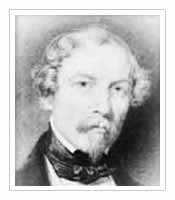
Eugene Flandin (1803 – 1876)
Orientalist painter Eugene Flandin was born in Naples, where his father had been sent in an official capacity. The year after he made his debut at the Paris Salon with two views of Venice. He accompanied the French army during the 1837 campaign in Algeria. His “Capture of Constantine”, shown in 1839, was bought by King Louis-Philippe, but the canvas was torn by bullets during the 1848 revolution. Eugene Flandin was a most interesting traveller and painter, one whose work, except for occasional watercolours and gouaches, is seen comparatively seldom.
Flandin’s other Salon picture of 1839, “The French Army Entering Algiers” is now in the Versailles museum. In 1840, Flandin and the architect-painter Pascal Coste were sent on a mission to Persia by the Institute. At this time, the major Western powers were endeavouring to develop their political and economic links with Persia but, since 1809, France had had no official representative in Teheran. The mission led by Éduard de Sercey, was supposed to obtain the maximum amount of information about the countries evolution under the reign of Mohammad Shah Qajar, and also to make a complete inventory of its monuments, both ancient and modern.
Travels
De Sercey, unable to understand the subtleties of Persian politics, was soon recalled to France with his retinue, abandoning Flandin and Coste, who were fraught with misgivings about being alone in a country that was both dangerous and inhospitable once one left the cities. With two sais, a French manservant, a disastrously bad Italian cook, horses and mules, they journeyed to Hamadan and Kirmanshah and then to uncharted areas in the southwest of the country, scarcely known to travellers. Latec, they left the charms of Ispahan to cross the great arid plains to Shiraz and Persepolis.
After two and a half years of hard work, they returned to France through Mosul, Aleppo and Constantinople. Flandin and Coste’s impressive six-volume album on Persia was finally published in 1851, as was Flandin’s more personal account of their journey. Two years later, at the 1853 Salon, Flandin exhibited an important oil, entitled Ispahan, Entrance to the Great Mosque on Shah Abbas Square.
Return
Flandin returned to the Middle East in 1844, this time going to Mesopotamia. The French archaeologist and diplomat Paul Botta was searching for the lost city of Nineveh, the ancient capital of the Assyrian Empire. He had abandoned the site of Kuyunjik for that of Khorsabad, where he had excavated some magnificent sculptures and bas-reliefs. Flandin spent six rather miserable months doing drawings of these, which were published in 1850 in the album Monument de Ninive.
However, by this time the English archaeologist Henry Layard had been able to prove that Kuyunjik, not Khorsabad, was in fact the site of Nineveh. Flandin continued to send oils to the Salon, such as A View in Tripoli, Syria, 1857, now in the Lille museum, Interior of Bazar, Tehran, 1857 and Sheikh ElIslam, the Damascus Chief Religious Dignitary, returning from Mecca.
He also published two more albums, L’Orient (1856), in four volumes, whose plates can sometimes be found in oils, and Histoire des Chevaliers de Rhodes (1864).
Literature: E. Flandin, Voyage en Perse de MM. Eugene Flandin et Pascal Coste, architecte, attachés å l’Ambassade de France en Perse pendant les années 1840-41, Paris, 1851, 2 vol.; P. Botta, Monument de Ninive, Paris, 1850.
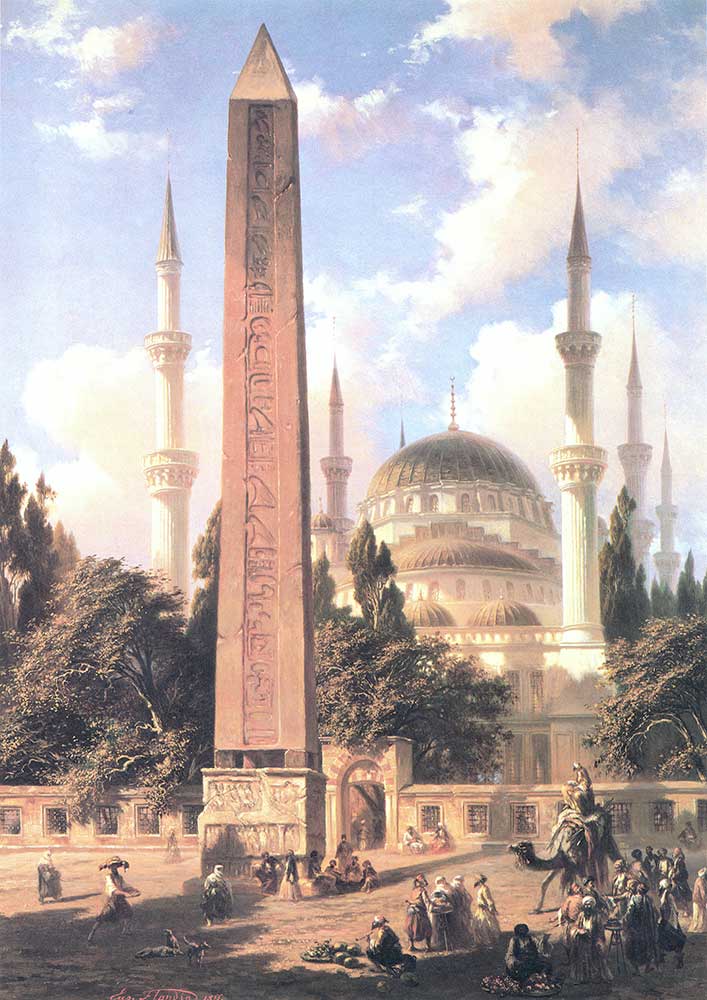
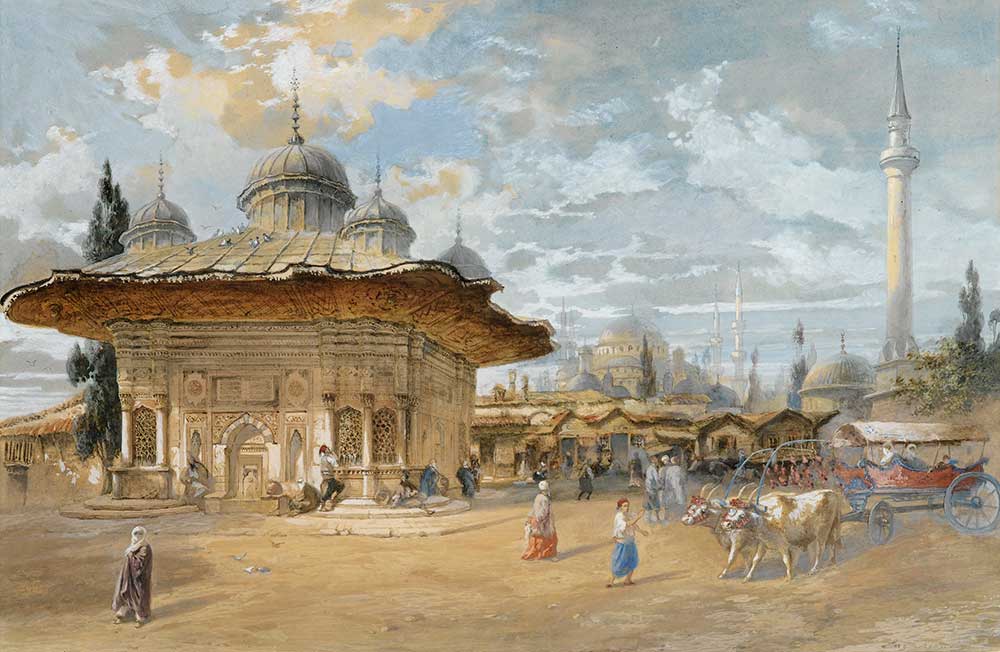
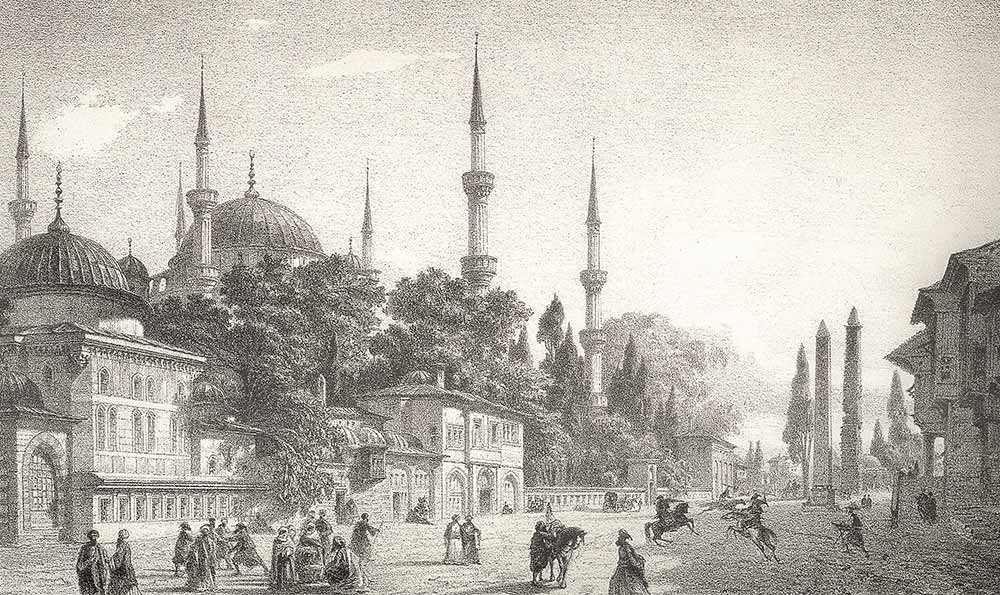
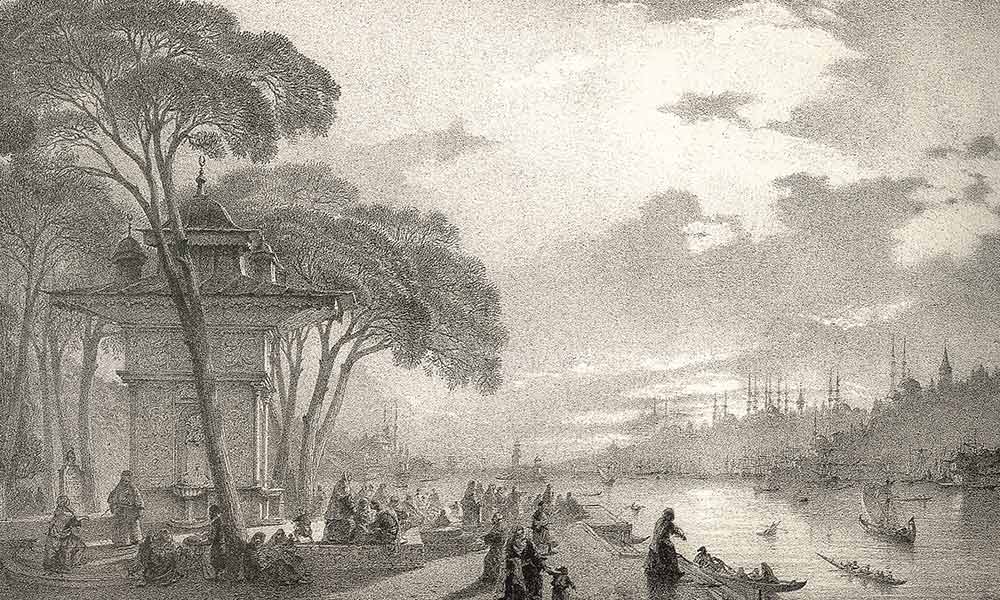
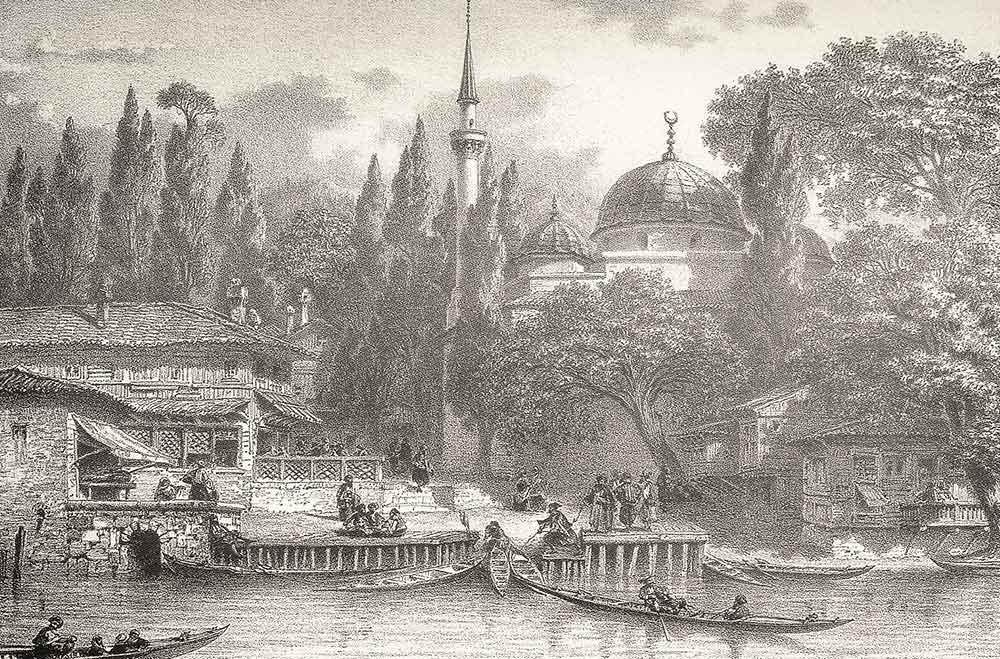
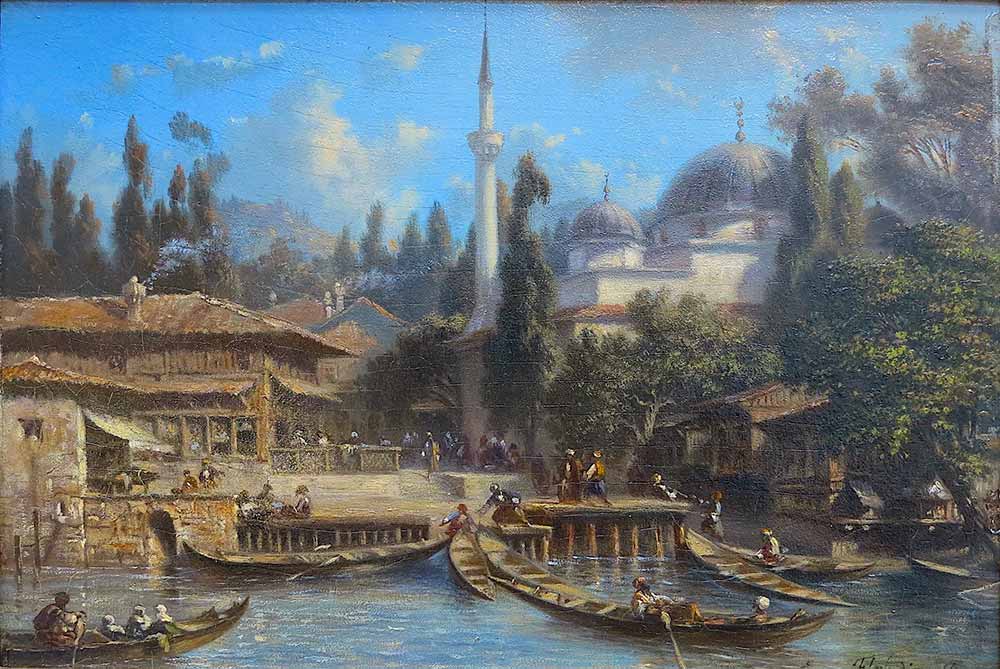
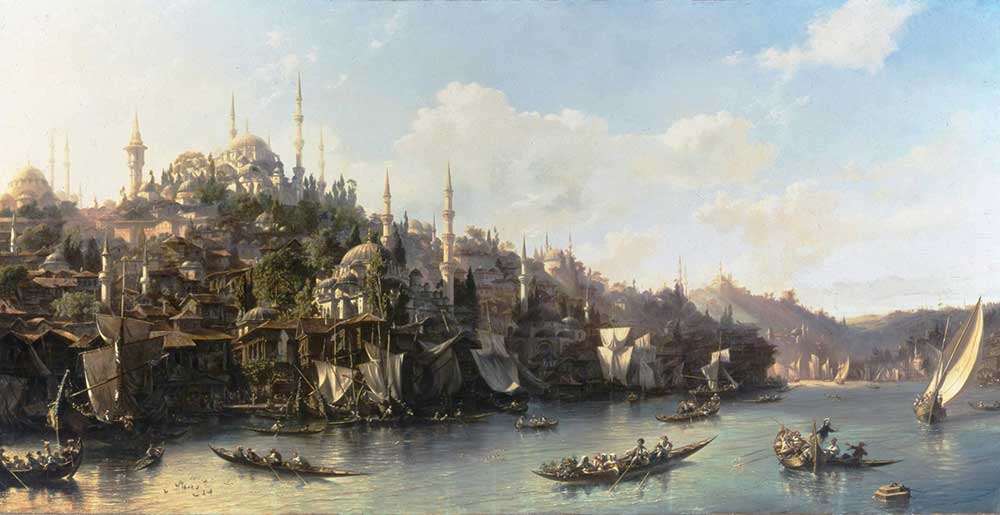
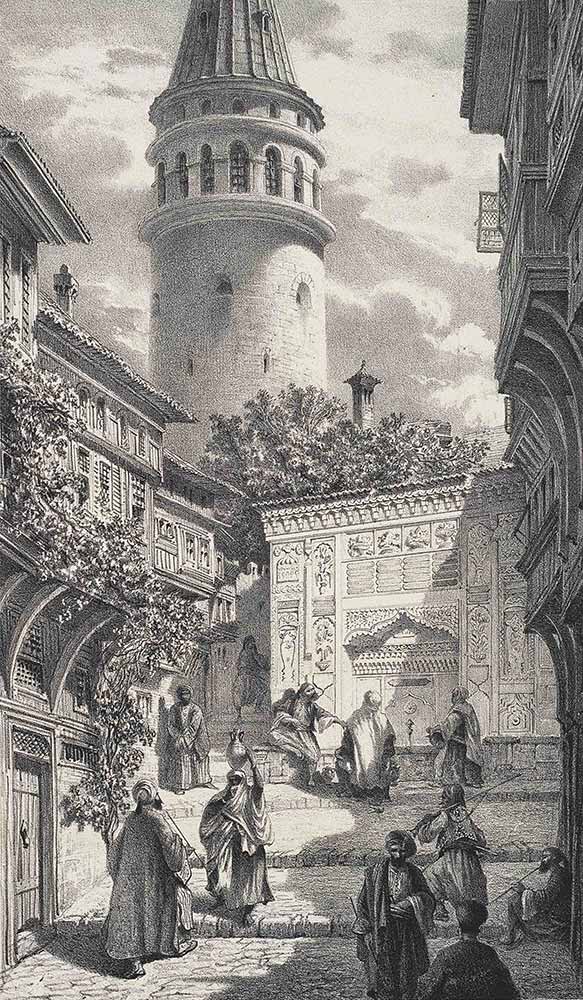
SEE CANVAS PRINT GALLERY FOR THIS PAINTINGS
